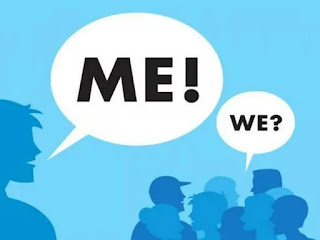Personal Space Differences
Week 6 October 23, 2020 Response to Personal Space Differences
“If we get separated, get off at the next stop and I’ll come back to find you.” On my first trip to Japan, my husband must have said this to me a dozen times. He was preparing me for the experience of riding a commuter train. He had been to Japan before and had experienced rush hour with train conductors wearing white gloves literally shoving people on board an overly crowed train. They do it very politely as they say ‘excuse me’, but still they are pushing people into a very tight space. Fortunately, I never had to experience the shoving. I tried to avoid getting on a train during the rush hours. I did experience the close encounters on the trains. Even in the non-rush hours, people have to stand close to each other for everyone to fit. Unspoken rules are followed to keep your personal space to a minimum and keep your eyes to yourself. I’m always amazed how people read the newspaper on the train by folding it carefully into the smallest sections and unfolding to the next reading area while still keeping the newspaper small and not in anyone’s way.
In America, we read our newspapers spread out wide with two hands grasping it open. We like to have our personal space and protect it too. In reading an article from class about personal space, I learned these personal bubble attitudes can come from where we grow up, how crowded the conditions were, and the proximity to others. As a general rule Western societies really like more personal space and places like southern European, Latin American and Arabian don’t need as wide of a personal space bubble.
Men and women have different needs for personal space too. Women are more likely to keep men further apart than they would a woman; even if that woman was a stranger. It’s a natural protection for women. So when a woman is visiting with a man who needs less personal space she may keep pulling herself away until she reaches her safe zone. I’ve also noticed the men around me like to have a lot of wide open spaces even with friends. If two men are talking together in a movie theatre or stadium, they will keep an open seat between them. Whereas women in the same scenario will sit side by side and enjoy a comfortable chat.
Even when people are used to being close to others in a crowd, people still like to have their own space even if it is a small bubble. When thinking of this for an ELL class, I would plan accordingly to give people enough space. I would also be aware of label all the supplies. In some cultures where a small personal space is less necessary, they may also have the habit of not thinking of material things as their own personal property space. In those cultures, people often share everything and an item belongs to all. I remember having to label all of my children’s items with their names. That may not be necessary in an ELL classroom.
Whether we are abroad or at home, it’s always good to be aware of other’s personal space and take the social clues that are given. I remember a Seinfield episode with the close talker. He got so close to everyone that no one felt comfortable around him. This may be true for Western cultures but when associating with someone who likes to be a little closer in, it’s good to know they are acting normal for them and give them a break.
Sources
https://westsidetoastmasters.com/resources/book_of_body_language/chap9.html



Comments
Post a Comment